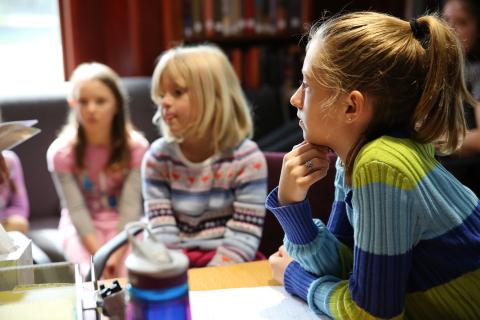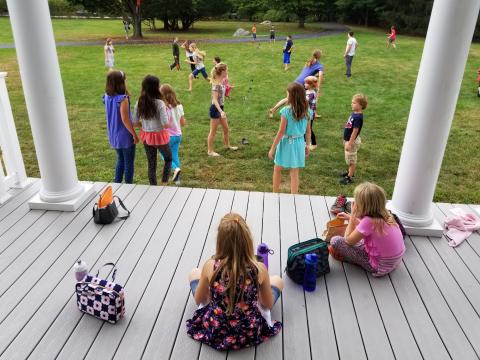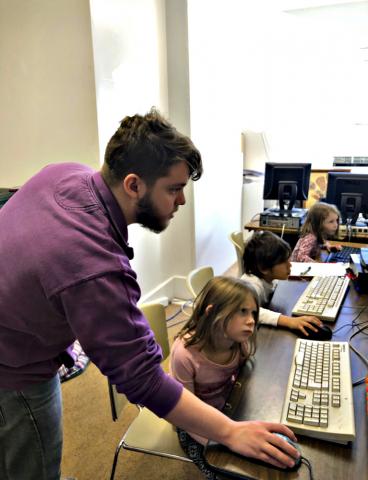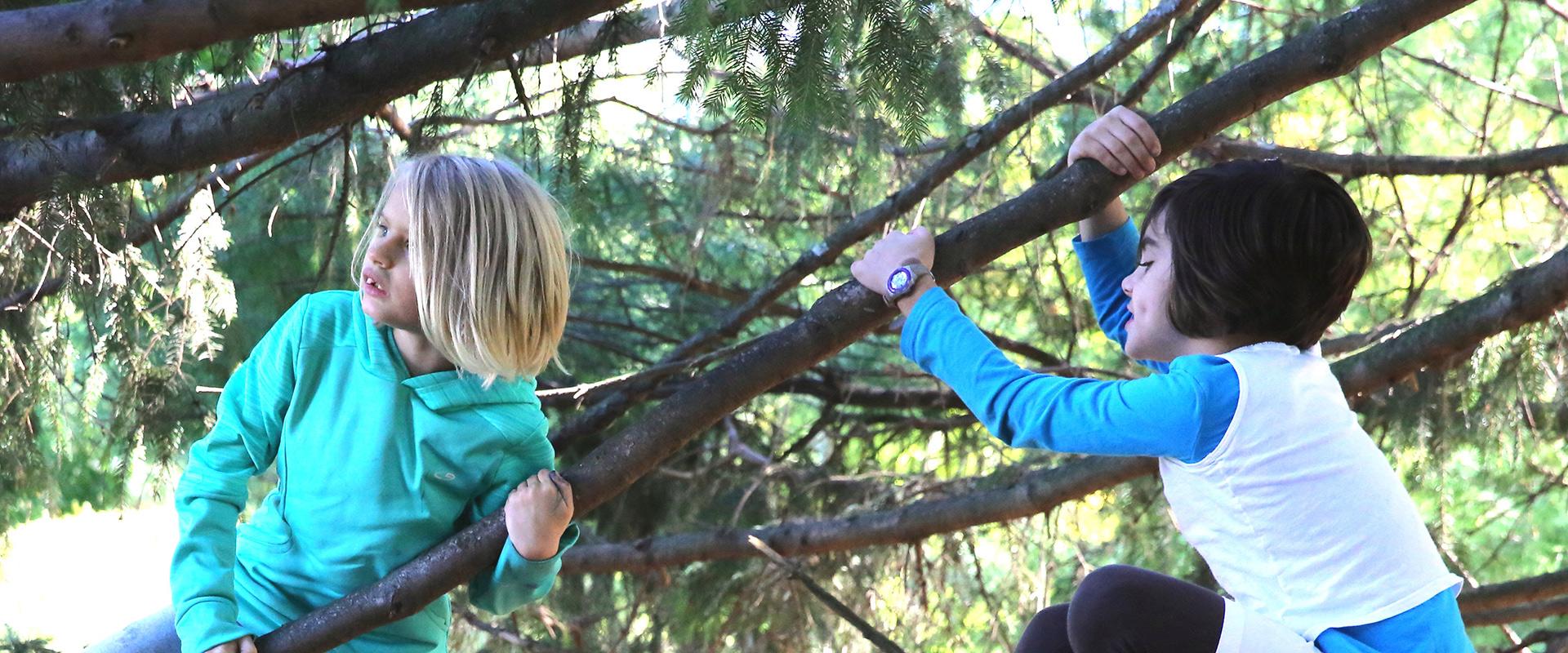Somewhat to my surprise, I have recently gained a new insight into a key element of what goes on here, in an area that I thought had been thoroughly analyzed from ever-so-many angles from the very first days of the school’s founding. It came unexpectedly as a result of my coming across a quote from Arthur Conan Doyle’s Sherlock Holmes, who was explaining his skills to Dr. Watson, his companion and recorder, saying, “I only see what you see, but I have trained myself, Doctor Watson, to notice what I see.” Suddenly, I realized that conceptualizations that we have made for half a century could easily be clarified and enriched by reference to Holmes’s comment.
Consider this: how have we often summarized our attitude towards “children”. Looking back at our writings over the years, one finds three basic formulations, each of which is accurate, each of which has considerable meaning – but none of which, I have now come to realize, encompasses one of the key aspects of what goes on here. It’s worth examining those formulations before addressing the main point I want to make here.
(1) The school endows every student with the same unalienable rights that they will possess as adult citizens of the United States.
The idea that there should be age distinctions with respect to guaranteed human rights did not seem to us to be justifiable, any more than such distinctions made sense with regard to other differences, such as gender, ethnic origin, or race. The march towards equal legal rights for all adults started with a clear ideal statement in the Declaration of Independence in 1776, but fell far short of implementation at that time. It took almost two centuries for the law of the land to fully embrace this ideal – except where children were concerned. People under the age of majority were legally devoid of rights, and subject to absolute control by different categories of adults throughout their childhood.
There seemed to us to be two things fundamentally wrong with this picture, one theoretical, one practical. The theoretical problem lay in the conceptual foundation for this state of affairs. Invariably, that boiled down to the notion that children lacked the judgment necessary for them to be held accountable for their actions; that they could not carry the burden of responsibility for what they did; and that they had to be governed by rules set down by various adults in their lives. One looks in vain for reasoned justification for this notion. It appears out of nowhere as something too obvious to require evidentiary backing – a generally accepted truth that is, to borrow a phrase from the Founding Fathers, “self-evident”.
The closest thing to an attempt to defend this concept that I have ever encountered had to do with the fact that children have less life experience than adults – in fact, so much less, that they can’t be relied on to exercise judgment in most situations. Now, until fairly recently, I have often been in the presence of older people whom I admire, who have much more life experience than I do, and whose judgment I respect. But it never occurred to me to place myself under their control, nor would such a surrender of independence occur to anyone over the age of 18 in this country who is in the presence of older adults. We do not, in America, place ourselves in the hands of our presumably wiser elders.
So where is the actual evidence for the need to deprive children of their rights? Nowhere. It doesn’t exist. We knew that this was the case when we developed our frameworks for the school, and we rejected outright any claim for an age differentiation with regard to rights. We did this out of a firm belief that the basic elements of being “human” are present from very early childhood, and that the word “human” in “human rights” must therefore include children.

As it turned out, the accumulated experiences of school life at Sudbury Valley provided, year in and year out, all the evidence needed that granting children the same rights as adults created a community in which young people, like adults, built world-views, weighed decisions, and comprehended the ideas of responsibility and accountability. It has been a long time, indeed, since anyone in the greater school community has given the slightest consideration to the matter; it has become, indeed, “self-evident” to us all.
The pragmatic flaw in differentiating children from adults is, in itself, serious enough to negate that differentiation in American society. It is well known that the continuity and sustainability of any culture depends critically on having successive generations grow up immersed in that culture. In fact, the best way to destroy a society’s culture is to take the youth of that society away from their native environment, exile them until they become adults, and then set them loose. This has been well known from ancient times, when it was a regular practice to exile groups from their native cultural setting and thereby destroy their culture. It is a practice still employed in modern times by many cruel dictatorial regimes.
So how can anyone expect children growing up in America to absorb the essential elements of American culture without being immersed in institutions and communities that act in accord with the core values of our culture? Yet, this is the way things are, and one need only examine the evolution of our society during the past half century to see the awful threat being posed to the preservation of our core values.
(2) We treat children in all respects as full-fledged members of the community, without taking their age into consideration.
The concept of human rights, central though it is to the school, has a certain abstract and legalistic character that falls short of embracing much of what the Sudbury Valley School experience is about. From the beginning, we took an additional fundamental position: we declared that in every respect, we treat children as people, having all the basic traits that define homo sapiens as a separate and unique species. In other words, age plays no role in the way we treat members of the community, whether they be “elders” or “little kids”. One and all, they have the same innate human ability to meet challenges, overcome obstacles, set goals, and communicate with other humans.
There is a vast difference between the legal bestowal of rights, and the community’s commitment to treating all members with the same respect, the same expectations and the same accountability for their actions. We saw that repeatedly in our country’s history. Thus, even after African-Americans were granted full citizenship rights at the end of the Civil War, they were often subject to bias and harassment. And the chasm between equal rights and equal day-to-day treatment has been no less apparent with respect to women.
When it comes to the way society treats children, the assumption that they are incapable of exhibiting the same basic traits as adults is so ingrained as to be considered too obvious to discuss. The justification for this attitude usually is based on a collection of facts that are indisputable: children have less life experience than adults; they generally have a smaller vocabulary than adults and hence are limited in their ability to communicate; they are, as a class, weaker than full grown adults; they are not able to take responsibility for their daily lives, being dependent on adults to provide the financial wherewithal needed for survival; and other statements of like character.
It turns out that none of these conditions, when applied to adults, leads to the conclusion that the adults should be denied equal treatment and respect. The vast difference in life experience between a 70-year-old person and an 18-year-old person is no barrier to treating them as equals in our society. A person who has not yet held a job – say, a college student who is supported by his parents – is not denied parity because he is not employed. An adult who has not attended college is not considered to be deserving of less respect than a university professor.
Actually, when one adopts the mindset that children and adults should be on the same footing in the community with respect to all matters, something remarkable takes place: the behavior of children becomes all but indistinguishable from that of adults. They turn out to be good problem solvers, to maneuver their environment effectively, to have good judgment, and to act responsibly. And perhaps most surprising and gratifying of all, they turn out to be able to form real relationships with other members of the community across the full range of ages. In Sudbury Valley, you find yourself in a world where it is no less “normal” for a nine-year-old to be friends with a teenager, or a teenager to be friends with a much older staff member, than it is for people within a narrow age range to be friends. You find yourself in a real human community. It almost feels miraculous, given the attitude prevailing in the wider society.

Students who enroll in the school become aware almost immediately that they have entered a world of equal rights and equal treatment, a world unlike any other they have encountered elsewhere. For those who enter at a very young age, this situation quickly becomes the norm, and seems unremarkable. But for those who have been exposed to the usual treatment accorded children in the wider community, the culture shock of entering Sudbury Valley is profound. Many wonder whether there isn’t some “catch”, and whether the way we present ourselves could really be true. It doesn’t take long for them to see that we walk the talk, but for some it takes quite a while to be comfortable in this new world.
(3) We “see” each student as an individual, each with their own distinctive personality.
Neither of the conceptualizations I have discussed suffice to give the full picture of what it means, on a human level, to be a student at Sudbury Valley. Equal rights – yes. Equal treatment – yes. But they are, in their essence, intellectual constructs, and lack the emotional component that is key to creating real bonds among people. And without real bonds, the element of “caring” is missing – caring for oneself, caring for others, caring for the school. That element stands out as perhaps the most noticeable one of all, the one that, more than any other, makes you want to be here, want to immerse yourself in this place.
So, how to describe this?

For some time now, I have tried using the statement that students feel – indeed, know – that they are “seen”, that other students and the staff don’t just pass by them as if they were inanimate objects, but “see” them as fellow beings, with all the consequences that follow. For example, should a student be injured, pretty much anyone who has seen this happen will rush to get help. Should a student encounter some emotional trauma, someone will surely seek to be of comfort and assistance. Should someone need help in completing a task, help is always at hand, whether it be to tie a shoe, find a lost item, figure out the answer to a question, or use a piece of equipment which the student in need of it has not yet been certified to use. “Seeing” another person is a prerequisite to compassion, to empathy, to connection, all of which abound in the school.
I now think that using the verb “to see” is not quite the right way to express this wonderful feature that lies at the heart of the school. Basically, “seeing” something refers to the physical act of vision, experienced through the sense of “sight”. It happens; you don’t have to do something special to make it happen. You open your eyes, and your mind registers something which it associates with the layout of your environment. You don’t have to think about the act at all. Anyone who has tried to inform people of something important has experienced the frustration of attempting this by means of a sign or poster. No matter how big the sign, where it is placed, what its color or its shape, a significant percentage of the passersby will not get the message. It is a phenomenon common and frustrating for anyone attempting to convey information in writing by making it easy to “see”. Yes, all have “seen” the sign; but they haven’t “noticed” it. Holmes had it right. His genius lay in noticing what others only see.
Members of the school community, one and all, are noticed by each other. And I include the staff here, of course – the ever-present adults who, unlike most of the adults the students encounter in their lives, actually want to know them. Being noticed means being cared about, being treated as a fellow human being in the most profound sense.
That is the Sudbury Valley way – to notice, and to be noticed. It is the third and crucial element that defines our uniqueness.
Note: SoundCloud artwork by Fiona Antonini

